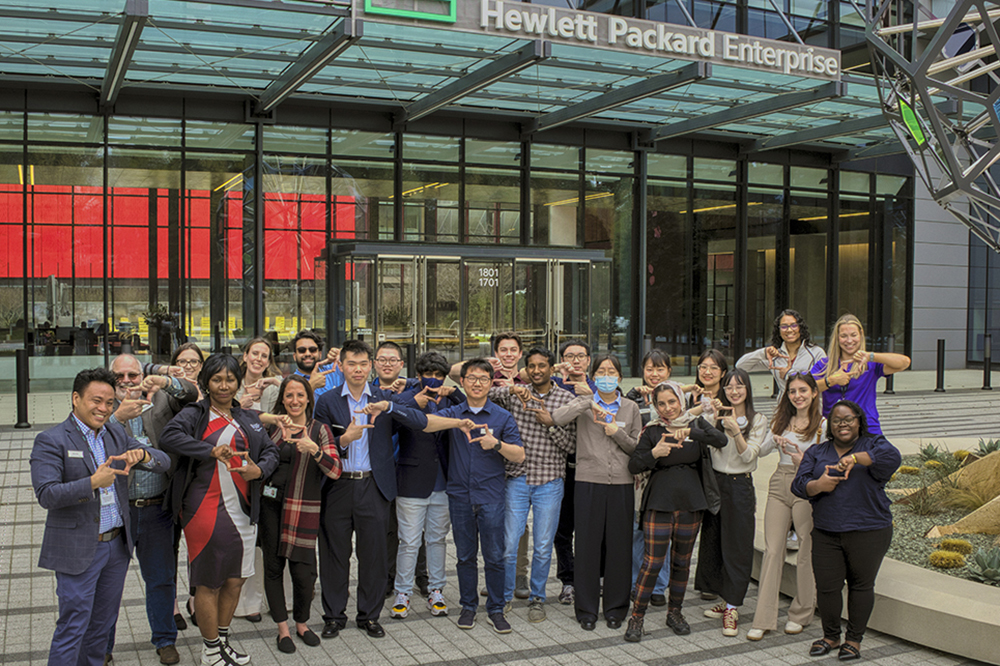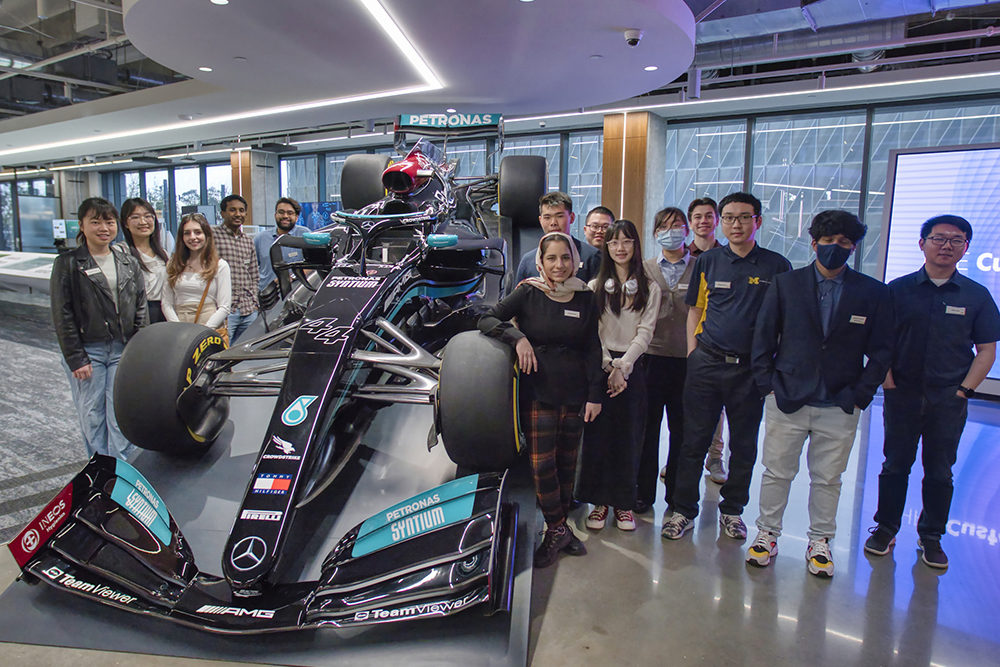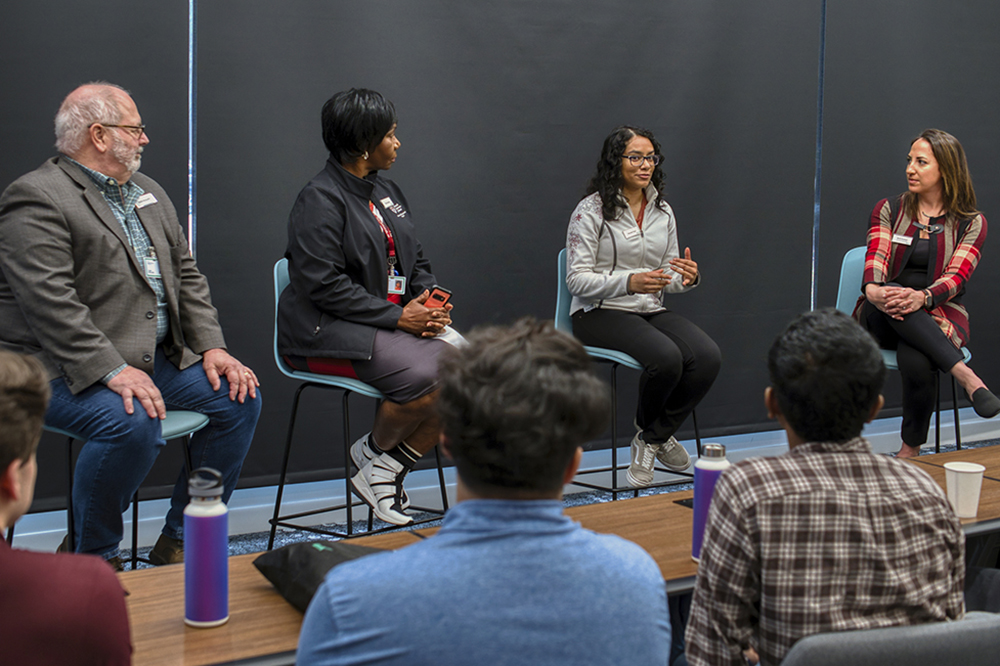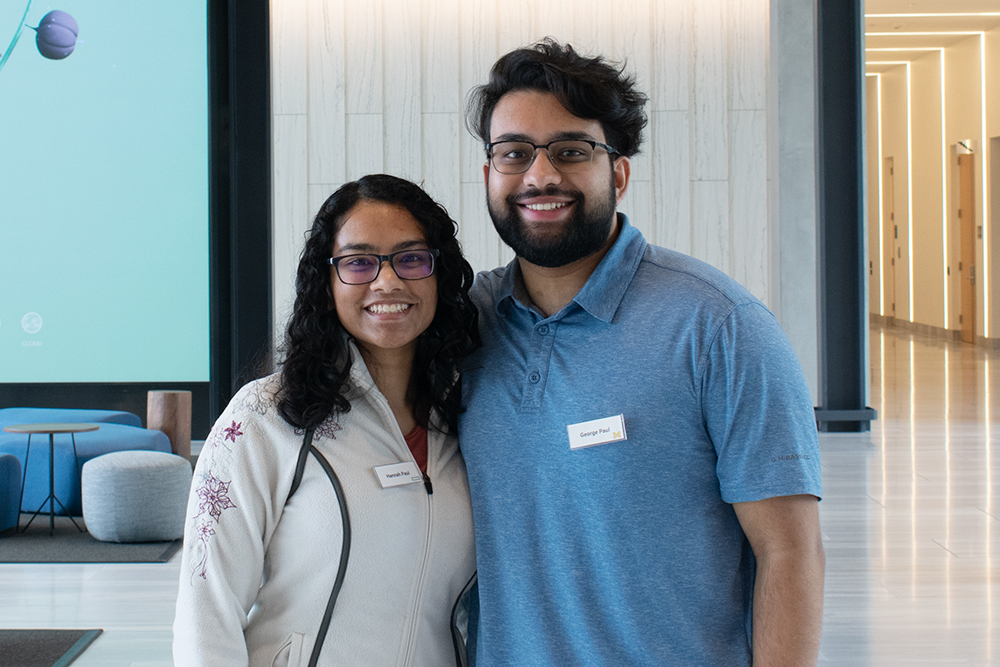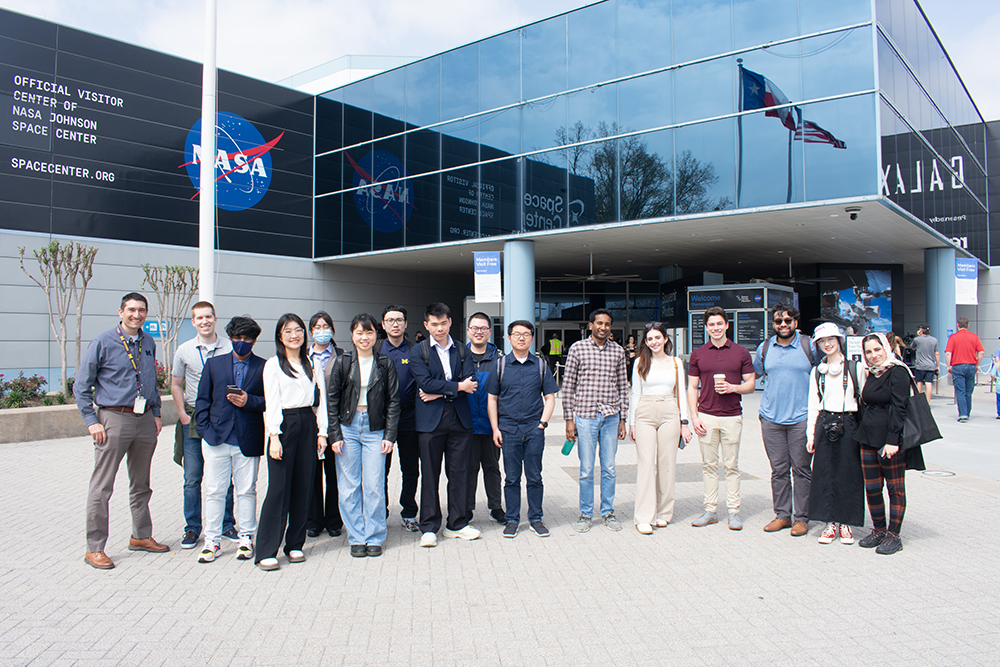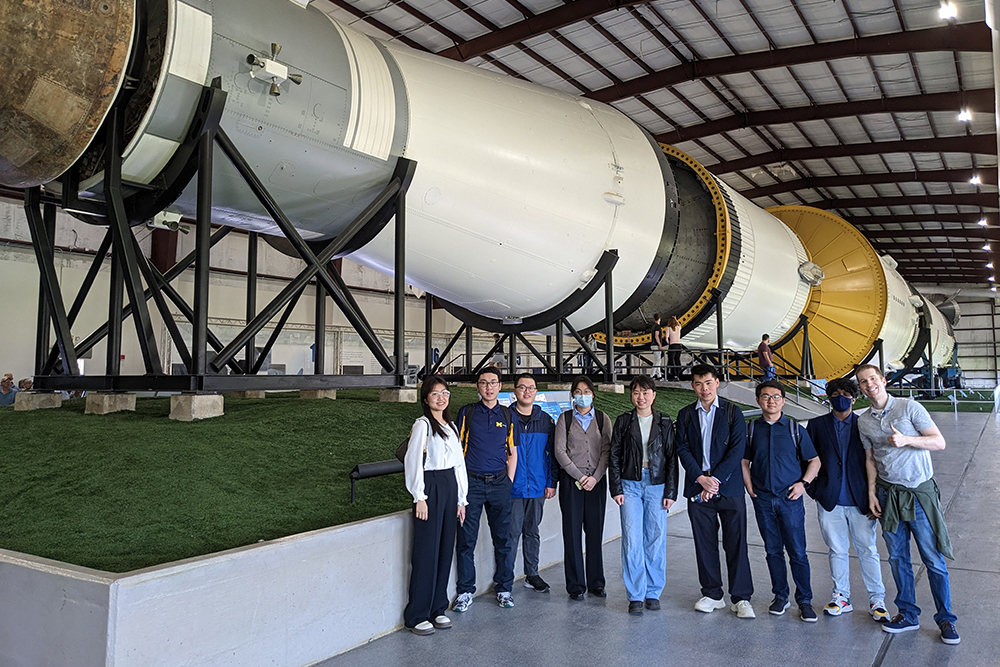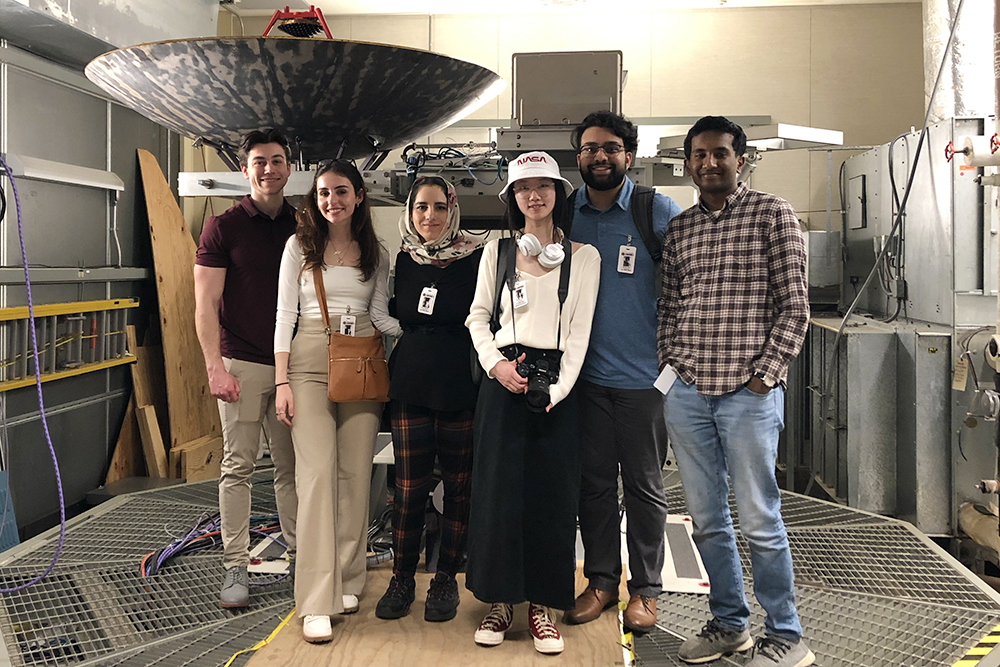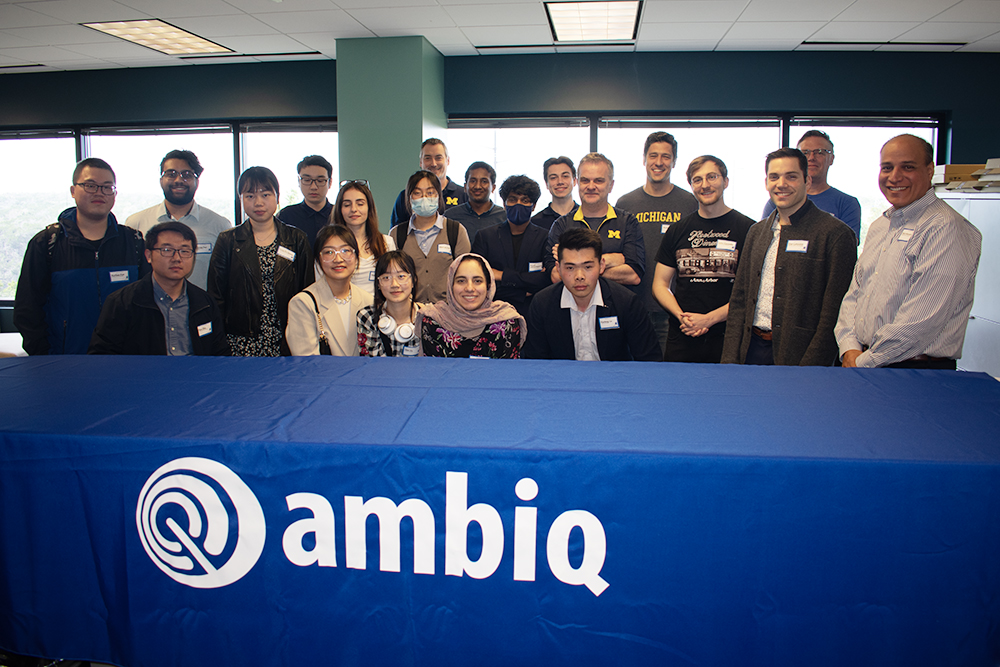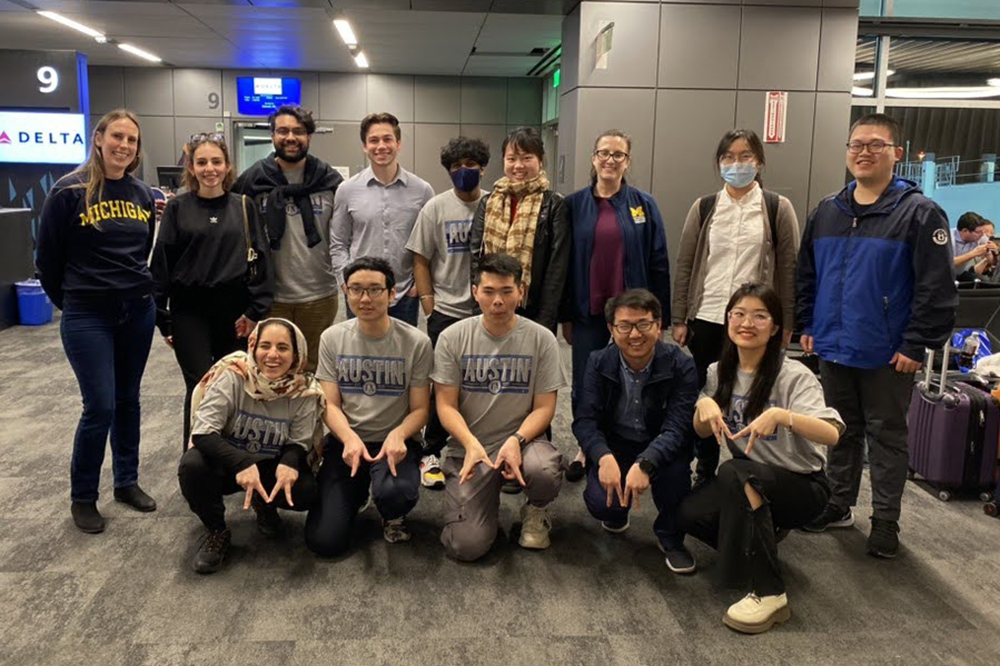ECE Expeditions rides to the Lone Star State for a tour of engineering companies
For its first in-person, out-of-state program since the pandemic began, ECE Expeditions took fourteen students to Texas for a behind-the-scenes experience at a variety of engineering companies in the Houston and Austin areas.
“Overall, the expedition gave me more motivation to learn and be a better person to do what I love,” said ECE Master’s student Yong Xin Huang. “I want to become an engineer who shows great passion and energy while talking about work.”
Students toured Hewlett Packard Enterprise, NASA, Ambiq, Dell Technologies, Torc Robotics, and NI (National Instruments) to learn more about the reality of working as electrical and computer engineers in industry. During these visits, they networked with Michigan alums, tested technology demos, and toured the companies’ labs and campuses.
It was great to hear engineers talk about how they got to their current positions and how they’re working to improve the world.
Wenhan Kou, ECE Master’s student
“ECE Expeditions is one of the most meaningful experiences I’ve had in my university years,” said ECE Master’s student Wenhan Kou. “It was great to hear engineers talk about how they got to their current positions and how they’re working to improve the world.”
Hewlett Packard Enterprise (HPE)
Hewlett Packard Enterprise (HPE) is one of the world’s leading enterprise technology companies. As a global edge-to-cloud company, they’re focused on helping companies connect, protect, analyze, and act on their data and applications.
After a tour of the campus, students explored demos and examined the Mercedes-AMG Petronas Formula One Team car, which champion driver Lewis Hamilton used to break the record for most F1 wins in 2021. HPE designed the car’s 300 sensors that measure on-track action down to the millisecond, and their edge-to-cloud platform helps the racecar team turn billions of data points into design and strategy insights.
The engineering panel focused on career advice and the benefits of HPE’s culture. One of the panelists also brought out a TI-99/4A computer, the first ever 16-bit home computer, for students to examine.
While there were no Michigan alumni present at the visit, one of the HPE Hardware Engineers, Hannah Paul, had a strong Michigan connection – her brother, George Paul, was one of the ECE attendees. Hannah gave the students an additional tour of her personal workspace, and was on hand to answer technical questions regarding HPE’s current research regarding exascale technology, particularly the future of supercomputers, which provide critical AI and machine learning infrastructure for intensive data processing.
“I never realized HPE’s role in creating the data acquisition systems for F1 Mercedes cars and supercomputing projects such as Frontier,” said Electrical Engineering undergrad Aashish Harikrishnan. “HPE’s impact extends far beyond being a computer manufacturer, and it was an eye-opening experience for me.”
NASA
The Lyndon B. Johnson Space Center is one of NASA’s largest research and development facilities, and it is the home of mission control and astronaut training. It currently leads the International Space Station operations and missions, as well as the development of the Orion spacecraft and NASA’s Gateway outpost program.
Also located on the Johnson campus is Space Center Houston, which is a leading science and space exploration learning center and Smithsonian Affiliate museum. It features more than 400 space artifacts, exhibits, and experiences that tell the story of the past and future of NASA’s human space-flight program.
Half the Expedition group toured the Space Center Museum with U-M CSE PhD student Andrew Loveless, who is currently a subject matter expert at the NASA Johnson Space Center. Loveless also presented about his research, which concerns cyber vulnerabilities in networks used by spacecraft, aircraft, and energy generation systems.
The other half of the Expedition group met with Adam Schlesinger (BSE EE 2005), the project lead engineer for the Gateway Habitation and Logistics Outpost (HALO). The Gateway will be a multipurpose outpost orbiting the Moon that will serve as a model for future missions to Mars and as staging point for deep space exploration. In addition to supporting the execution of engineering technical authority for HALO, Schlesinger leads the coordination and technical integration of engineering resources with the Power and Propulsion Element (PPE).
Schlesinger arranged an in-depth tour of the government labs. Students met with several engineers, including Michigan alumni Ami Yang (BSE EE 2015) and Pooja Desai (BSE Aerospace Engineering 2013). During these presentations, students got to test new heads up display technology for space suits (think the JARVIS interface on Tony Stark’s Iron Man suit in the Marvel Cinematic Universe). Students also toured various labs and spaces, including an anechoic chamber (which absorbs all sound and is used for testing antenna and communications).
Schlesinger joined the entire group for dinner, so students could ask him questions about everything from his early career path, to the projects he’s worked on, to his predictions for the Michigan basketball season (Schlesinger had partially lost his voice due to enthusiastic cheering during a recent Michigan game).
“One of the experiences I most enjoyed was talking with the alum from NASA [Schlesinger] during dinner,” said ECE Master’s student Yihan Wang. “He gave me some suggestions for my future career, and I left the trip feeling motivated and energized.”
Ambiq
Ambiq® is a startup semiconductor company that works to advance ultra-low power electronics for next generation Internet of Things. It was founded by alum Scott Hanson (BSE MSE PhD EE ’04 ’06 ’09), Ambiq’s current Chief Technology Officer, and it was based on technology Hanson developed with his doctoral advisors, Professors Dennis Sylvester and David Blaauw.
At the heart of Ambiq’s game-changing technology is SPOT™, which stands for Subthreshold Power Optimized Technology. Ambiq’s SPOT technology enables semiconductor products to operate at ultra-low voltage levels inside the chip, increasing energy efficiency by requiring much less power to function. The resulting chips are the world’s lowest-power chips of their kind. The company has also been working to advance AI-empowered devices, such as advanced smartwatches that support a variety of advanced applications.
“The Ambiq visit is where I learned what I want to accomplish,” said Electrical Engineering undergrad Asia Rahman. “It reinforced what I want to do. I know that I want to head into circuit design, and Ambiq is exactly the kind of company I want to work for.”
Ambiq has grown to 225 employees with offices around the world. There is a large U-M contingent present at the company, and nearly half a dozen Michigan alums made up the engineering panel that explained their history, work, and goals.
“Ambiq was my favorite part of the trip,” said ECE Master’s student Xunhan Fan. “It is a small yet dynamic company. I enjoyed learning about the speakers’ life stories, especially how they transitioned from a U-M ECE student to an engineer or an entrepreneur. They were so friendly and gave really good advice.”
Dell Technologies
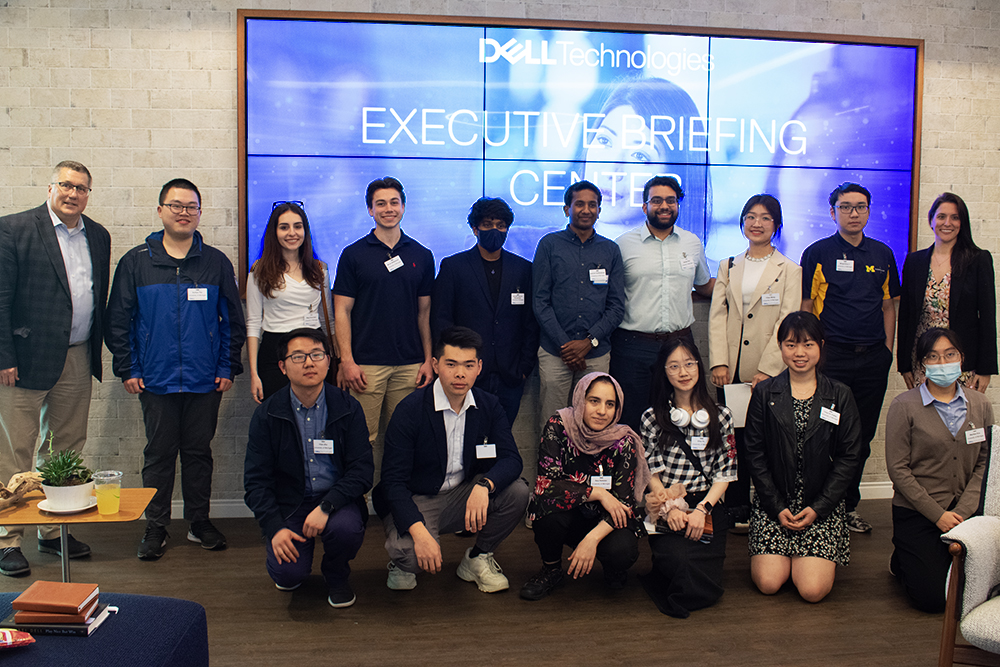
Dell Technologies focuses on sales of personal computers, network servers, data storage solutions, and software. By 2021, they were the largest shipper of PC monitors globally and the third-largest PC vendor by unit sales worldwide.
Dell engineers greeted the students and began the visit with an in-depth presentation on their work regarding Edge computing and the future of Smart Cities. Students explored technology demos on autonomous factories, medical sensing, and next generation displays. They also got to tour the labs and a makerspace with current engineers who explained their day-to-day routine.
Dell treated the group to a traditional Texan barbecue dinner at The Salt Lick, which was confusing for students who didn’t know what a salt lick was (it’s a block of salt used as a nutritional enrichment for cows and horses). During dinner, representatives from Dell sat with the students to answer questions and explain further in depth about their work and career paths.
“Overall, Hewlett Packard Enterprise and Dell Technologies gave me the direction I want to work in the future,” said ECE Master’s student Mingcheng Li. “I was astonished not only by their technological advancement but most importantly, by their ideologies about future technological development.”
Torc Robotics
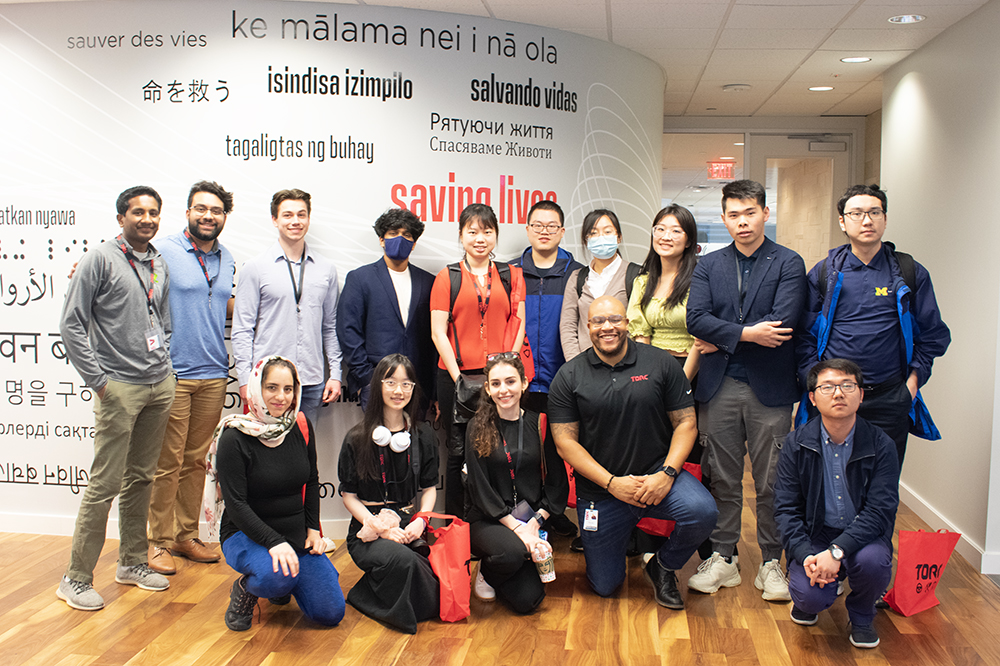
Torc Robotics is an autonomous vehicle startup company. They are specifically focused on commercializing self-driving trucks for safe, sustained, long-haul innovation in the freight industry. They design and create full-stack software for autonomous driving and sensor suite integration. Their self-driving system, ‘Asimov,’ navigated a coast-to-coast trip across America that ended in Washington in 2017, becoming Washington’s first certified autonomous test vehicle under Gov. Jay Inslee’s 2017 Autonomous Vehicle Initiative.
In 2019, Daimler Truck AG purchased a majority stake in Torc Robotics, an independent subsidiary of Daimler Truck. Torc and Daimler Truck formed the first industry partnership between an autonomous company and a truck Original Equipment Manufacturer. With safety as its top priority, Torc’s goal is to be the first profitable solution for deploying Level 4 Autonomous trucks at scale.
After a brief overview of the company’s history and current work, students toured the office and engineering stations. Each student was then paired with a current Torc Robotics engineer for a job shadowing exercise. The engineers showed the students around their workspace and demonstrated some of their current projects. The Vice President of Engineering, U-M alum Dushyant Wadivkar (MS Mechanical Engineering), also presented about his career path and his role at the company.
“Torc Robotics was fun because they allowed us to speak directly with the engineers in one-on-one conversations so we could learn more about what exactly they do,” said undergrad George Paul, who is double-majoring in Electrical Engineering and Business Administration. “Listening to the VP talk about the goal of the company was inspiring, and I learned a lot about how start-ups like Torc Robotics are pushing the envelope of technical marvels. It was stunning to see the future being crafted right before my eyes.”
National Instruments (NI)
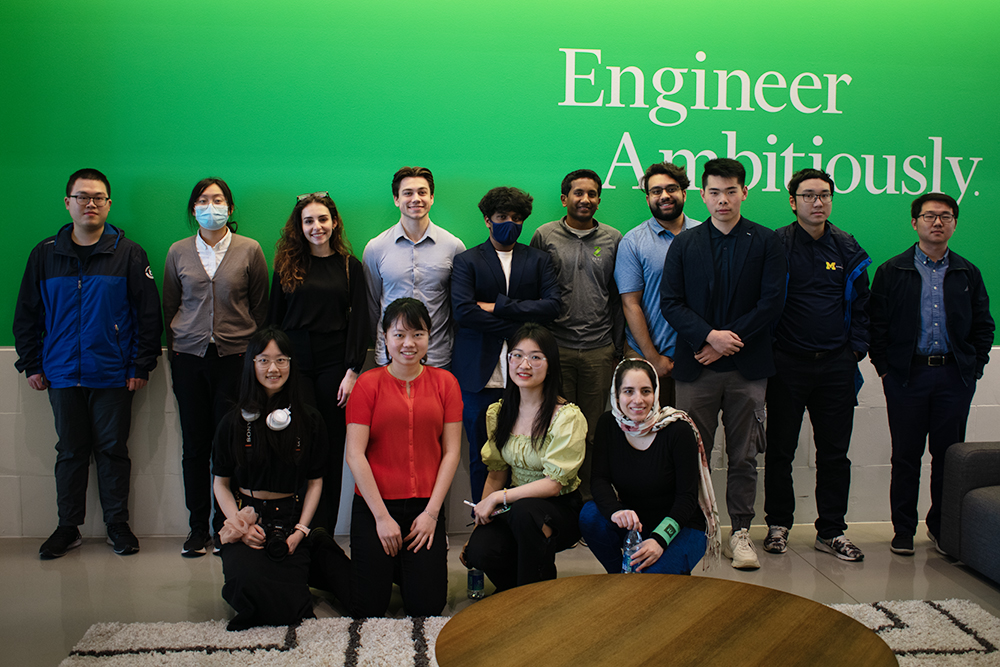
National Instruments (NI) is a producer of automated test equipment and virtual instrumentation software. They develop automated test and automated measurement systems to help engineers solve some of the world’s toughest challenges.
NI began with an engineering panel, which included alums from ECE and other departments at U-M. They spoke about their career paths, their daily routines, and their favorite and least favorite parts of their jobs. The students were then given an in-depth tour of the labs, where they got to handle demos and chat with working engineers.
After the tours, the CEO of NI, Eric Starkloff, hosted a Q&A session with the group, where he answered questions regarding important skills to prioritize (software and teamwork), and spoke about his career path and university experiences.
“Eric left a lasting impression on me with his energy and passion,” said ECE PhD student Yilun Zhu. “His enthusiasm motivated me to strive for more than just being a typical engineer and to truly be passionate about both work and life.”
Houston and Austin
In addition to the industry experience, attendees also got to network with fellow Michigan undergraduate and graduate ECE students while exploring the Houston and Austin areas.
“I made great friends on the trip who will be with me throughout the rest of my U-M career,” said Computer Engineering undergrad Micah Williamson. “I loved my experience with the expedition, and it made me confident that I’ve chosen the correct path of study.”
ECE Expeditions was initiated in 2016 by the ECE Alumni Advisory Council, with the goal of introducing students to a variety of engineering careers.

 MENU
MENU 

